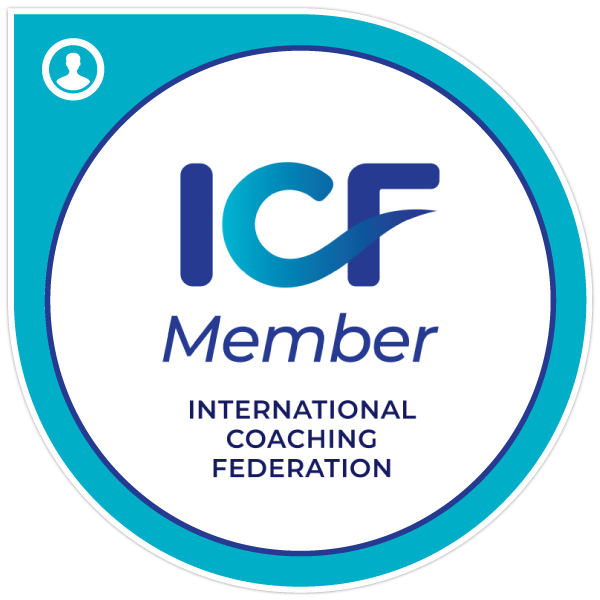As businesses prepare to navigate the complexities of 2024, aligning coaching needs with strategic goals is paramount to ensure sustained growth and competitiveness. This alignment not only enhances individual performance but also drives organizational success by ensuring that the developmental needs of employees are directly linked to the company’s vision and objectives. By consciously connecting coaching initiatives with strategic goals, businesses can create a more focused, engaged workforce that is equipped to meet future challenges head-on.
To achieve this alignment, businesses must first clearly identify their strategic goals, understanding the direction in which they intend to steer their operations and the key outcomes they wish to achieve. Assessing current coaching programs is the next critical step, as it involves evaluating existing practices to determine how well they support these strategic goals. Following this, it is essential to tailor coaching approaches to align more closely with specific strategic objectives, ensuring that every coaching intervention is purpose-driven and directly contributes to the overarching aims of the organization.
Furthermore, measuring the effectiveness of these coaching interventions becomes crucial to understanding their impact and refining them over time. Finally, for coaching to be truly transformative, it must be seamlessly integrated with the broader organizational culture and leadership development initiatives, fostering an environment where continuous learning and development are part of the everyday fabric of the organization. This comprehensive approach to aligning coaching with strategic goals not only optimizes talent development but also propels the organization towards its desired future state, ready to meet the demands of 2024 and beyond.

Identifying Strategic Goals
Identifying strategic goals is a critical first step for businesses aiming to align their coaching needs with their strategic objectives for the year 2024. This process involves defining clear, actionable, and measurable targets that the organization aims to achieve within a specified timeframe. These goals not only provide a direction for the company but also serve as benchmarks against which the effectiveness of various initiatives, including coaching programs, can be evaluated.
To begin with, it is essential for businesses to engage both top management and key stakeholders in setting these strategic goals. This collaborative approach ensures that the goals are aligned with the overall vision and mission of the organization. It is important to consider both long-term objectives and the more immediate needs of the company, balancing innovation and growth with sustainability and resilience.
Once the strategic goals are clearly defined, the next step is to analyze how coaching can support these objectives. For example, if one of the strategic goals is to enhance leadership capabilities within the company, the coaching program can be tailored specifically to develop the leadership skills of high-potential employees. Similarly, if the goal is to improve operational efficiency, coaching can focus on enhancing the skills and competencies of the operations team.
In summary, identifying strategic goals is not just about setting targets, but also about understanding the path that will lead the organization towards achieving these aims. It sets the foundation for all subsequent decisions regarding the deployment of resources, including human capital. Effective alignment of coaching programs with these goals can significantly enhance their impact, contributing to the overall success and competitiveness of the business in 2024.
Assessing Current Coaching Programs
When businesses look into aligning their coaching needs with their strategic goals for the upcoming year, a critical step involves assessing their current coaching programs. This process is vital to determine whether the existing initiatives are effectively supporting the organization’s objectives or if adjustments are necessary. By thoroughly evaluating the strengths and weaknesses of current coaching practices, organizations can identify areas that require enhancement or expansion.
Assessment of coaching programs generally includes gathering feedback from participants and coaches, analyzing the outcomes in relation to business goals, and checking the alignment of coaching content and methodologies with the company’s strategic direction. For instance, if a company’s strategic goal for 2024 is to enhance innovation and creativity, they need to ensure that their coaching programs are designed to foster these specific skills among employees.
Moreover, evaluating current coaching programs helps in understanding the engagement levels and the actual impact of coaching on employees’ performance and development. This insight allows for informed decisions on necessary modifications or the introduction of new programs tailored to meet the strategic needs of the enterprise. By aligning coaching programs closely with strategic objectives, businesses not only enhance their growth prospects but also boost employee morale and retention, creating a more dynamic and competitive organization.
Tailoring Coaching Approaches to Strategic Objectives
Tailoring coaching approaches to strategic objectives is an essential step for businesses aiming to align their coaching needs with their strategic goals, particularly as they plan for 2024. This process involves customizing coaching programs to directly support the achievement of specific business objectives, ensuring that the investment in coaching yields tangible business outcomes.
To effectively tailor coaching approaches, businesses first need to have a clear understanding of their strategic objectives for the coming year. These objectives might include expanding into new markets, increasing operational efficiency, or improving customer satisfaction. Once these goals are defined, the next step is to identify the specific skills and competencies that employees need to achieve these goals. For example, if a goal is to enter a new market, relevant coaching for teams might focus on cultural competence, language skills, or understanding regional market dynamics.
The alignment of coaching with strategic objectives should also consider the different levels within the organization. Different coaching strategies may be needed for leadership compared to mid-level managers or front-line employees. Leaders may need coaching on strategic decision-making and leadership in change management, while front-line employees might benefit more from coaching on customer interaction and specific operational skills.
Moreover, it is crucial for businesses to ensure that the coaches or mentors have a deep understanding of the organization’s strategic goals and the specific industry context. This enables the coaches to provide more relevant and practical advice and guidance. Organizations might consider developing a pool of internal coaches who are intimately familiar with the company’s culture and goals, or they might opt to bring in external coaches who bring specialized expertise that aligns with the company’s strategic directions.
By tailoring coaching approaches to support direct strategic objectives, companies can not only improve individual employee performance but also drive organizational success and adapt more dynamically to changing market conditions. This strategic alignment makes coaching an investment in the company’s future, not just in its people.
Measuring Coaching Effectiveness
Measuring the effectiveness of coaching programs is a critical step for businesses aiming to align their coaching needs with their strategic goals for 2024. This process involves establishing clear metrics and benchmarks that reflect the strategic objectives of the organization. By doing so, companies can ensure that the coaching they provide contributes directly to their broader business goals, such as improving performance, enhancing leadership skills, or increasing employee engagement and retention.
To effectively measure coaching effectiveness, businesses first need to define what success looks like in the context of their strategic goals. This might involve setting specific, measurable outcomes such as increased productivity, higher employee satisfaction scores, or improved leadership competencies among participants. Companies should also consider both qualitative and quantitative measures to capture a comprehensive view of coaching impacts. Qualitative data can be gathered through feedback from the coaching participants and their supervisors, while quantitative data could include metrics like completion rates, performance improvements, and return on investment (ROI).
Furthermore, it is essential for businesses to implement regular feedback loops and adjustment processes within their coaching programs. This allows for continual refinement and ensures that the coaching remains aligned with evolving strategic goals. Periodic reviews of the coaching program’s effectiveness should be scheduled to assess its impact and make necessary adjustments. This iterative process not only helps in fine-tuning the coaching initiatives but also reinforces the organization’s commitment to achieving its strategic goals through targeted developmental interventions.
By rigorously measuring the effectiveness of coaching programs, businesses can make informed decisions about how to best develop their workforce and achieve strategic success in the competitive environment of 2024. This approach not only enhances the value of coaching within the organization but also supports a culture of continuous improvement and strategic alignment.
Integrating Coaching with Organizational Culture and Leadership Development
Integrating coaching with organizational culture and leadership development is a crucial strategy for businesses aiming to align their coaching needs with their strategic goals for 2024. This approach emphasizes the importance of synchronizing coaching initiatives with the core values and behaviors that define the organization. By doing so, businesses can ensure that coaching not only supports individual employee growth but also reinforces and advances the organizational culture.
Leadership development is another vital aspect of this integration. Effective coaching should be designed to cultivate leadership skills that are in line with the company’s long-term strategic objectives. This means coaching should focus on developing leaders who can not only perform their current roles effectively but also lead the organization towards its future goals. Leaders trained in this way are better equipped to handle the challenges of a dynamic business environment and can inspire their teams to work towards common goals.
Furthermore, integrating coaching with organizational culture and leadership development helps in creating a continuous learning environment. This environment encourages employees at all levels to develop the necessary skills and behaviors that promote strategic alignment and operational excellence. It also helps in building a more engaged and motivated workforce, capable of driving the organization towards its strategic objectives.
Overall, the integration of coaching with organizational culture and leadership development is not just about enhancing individual performance but about creating a robust framework that supports the sustainable growth and success of the entire organization. This holistic approach ensures that coaching investments are directly linked to strategic outcomes, making it a critical consideration for businesses planning for 2024 and beyond.


Leave a Reply